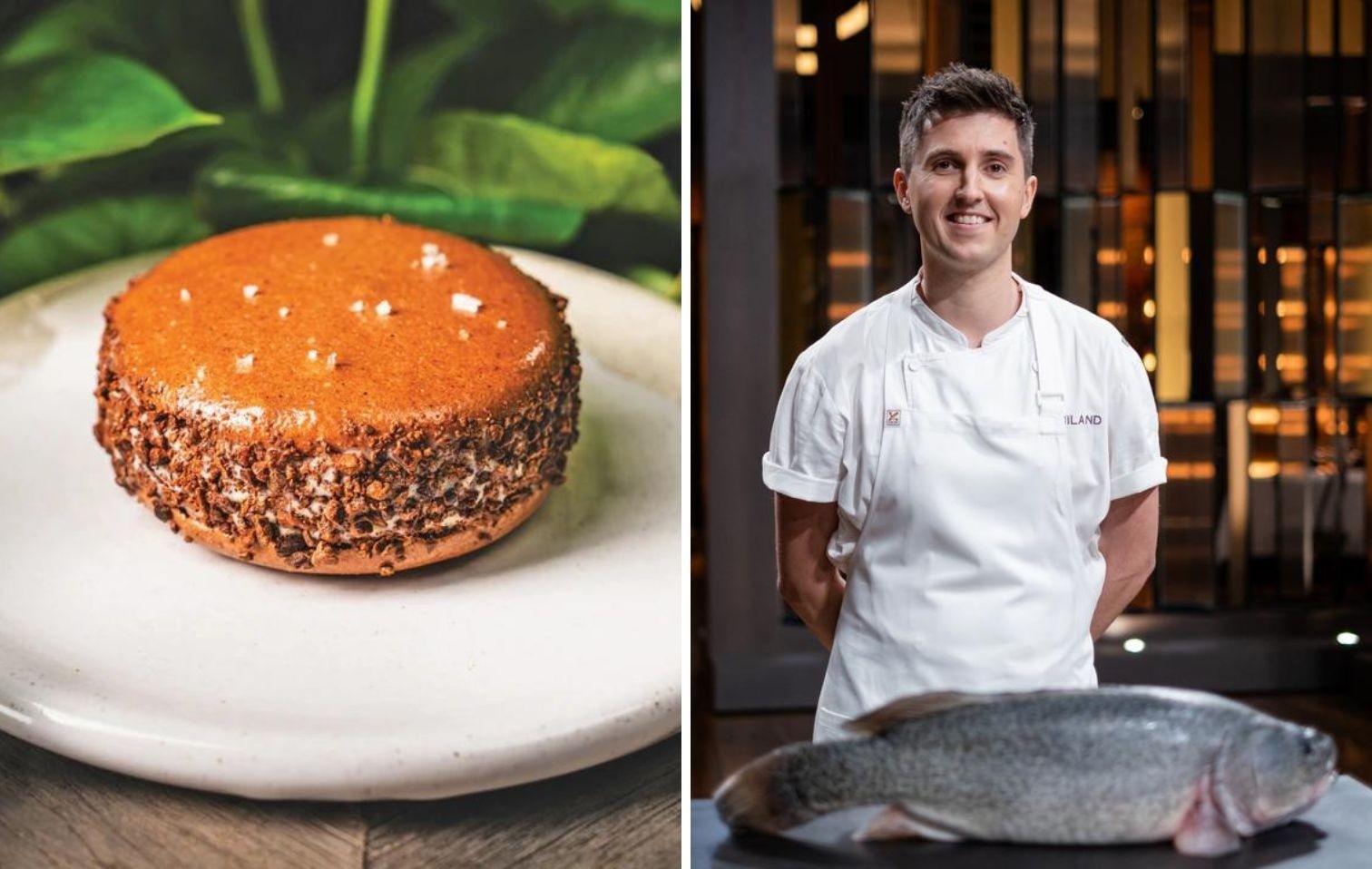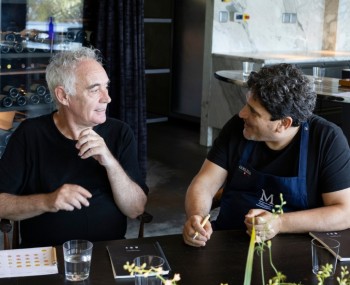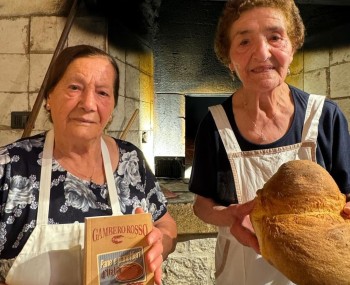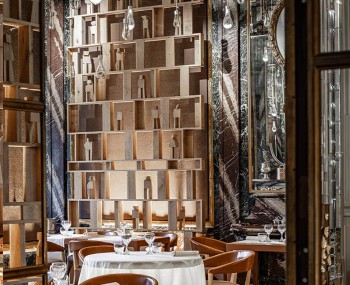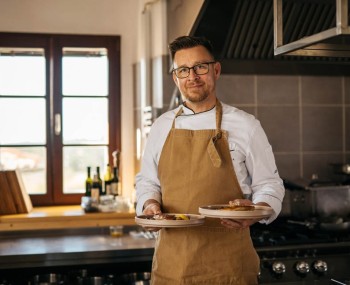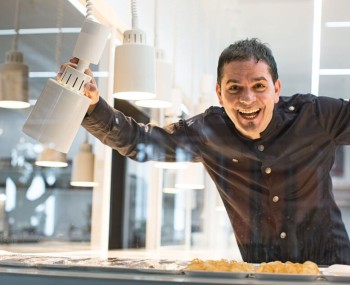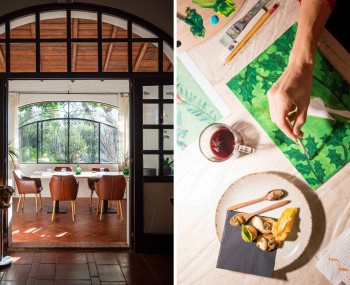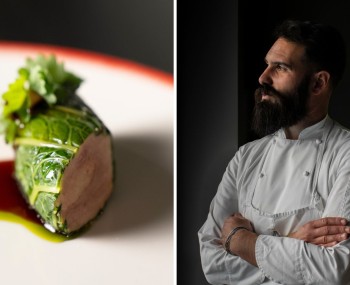Australian chef Josh Niland continues to revolutionize seafood cooking with a fin-to-gill approach that abolishes the word “discard.” "There is a lot of talk about not eating fish anymore. In my opinion it's more about paying attention to where we source and how we work."
The chef
Fresh from Saint Peter's relocation into the sumptuous spaces of the Grand National Hotel in Paddington, Sydney, chef Josh Niland, known as the “fish butcher,” can be well satisfied. A year ago he set foot in Singapore, where he runs Fysh at the Edition Hotel; then there's Fish Butchery, a fish market that doubles as a prep kitchen, and Petermen, a more casual eatery also in Sidney. Also to his credit are three books, which have changed the way fish is cooked around the world. For him, sea creatures are marvelous assemblages to be taken apart like playful Legos, so as to make edible and enhance virtually every cut (except the gallbladder), not without imagination.
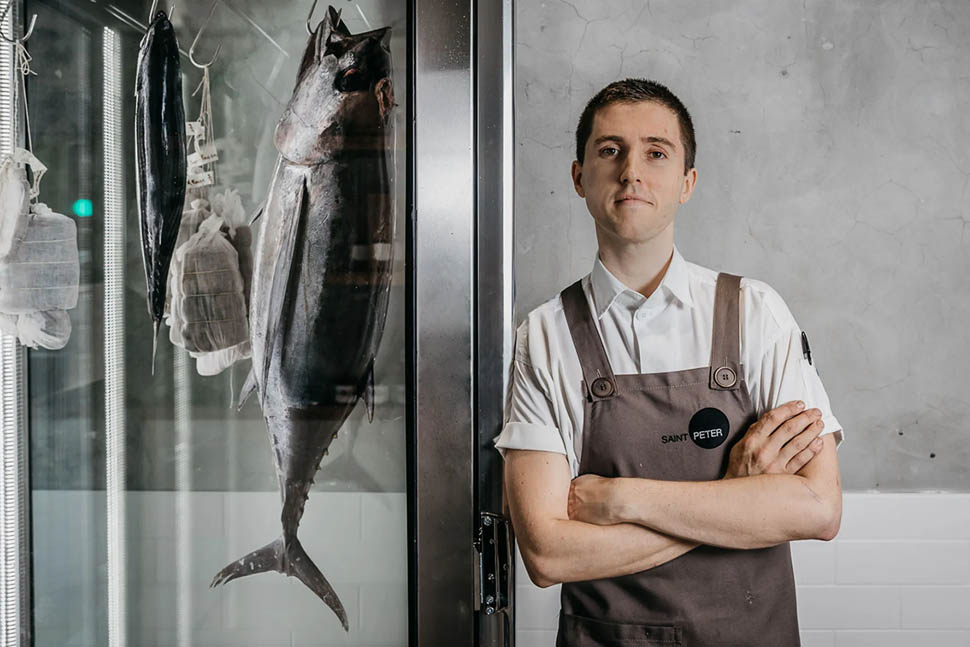
1) Eliminating waste is an ethical duty, but it also serves the economics of a restaurant. While most just serve fillets and use the bones for steak, perhaps slipping a few scraps into the staff's ration,the no-waste practice at Saint Peter's has allowed the chef, in the tough years following the 2016 opening, to survive without laying anyone off, simply lowering the food cost. “I don't think there can be innovation without a problem," the chef says today.

2) Niland's imagination has no limits: from the bones, super soft after long cooking in a pressure cooker, he made the dough he uses in a mock chocolate cake; from the eyes first a waffle, served without declaring the ingredients so as not to scare, then an ice cream, which surprisingly does not taste like fish. To accomplish this, he studied their structure in an optometry textbook. At Fysh, the same ingredient is incorporated into a Valhrona Chocolate Macaron (pictured), as a reinterpretation of the orginal dessert that refers precisely to the circular outline of an eye.
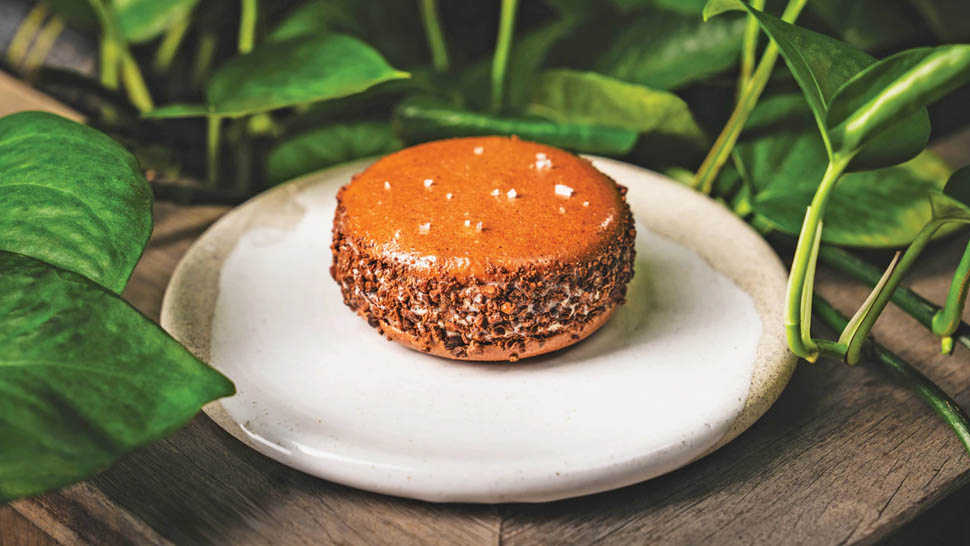
3) If Niland has applied the art of butchery to seafood, it is because during his first 5 years as a cook he went to a butcher's shop every week to learn how to dismantle carcasses. Even the humblest piece is then ennobled by elaborations as valuable as they are varied.
4) Never wash the fish! This can prevent the natural development of ammonia, which occurs when it is soaked or stored at the wrong temperature. One can also prolong its shelf life beyond the ritual three days and dodge the canonical squeeze of lemon, intended to tame the incipient ammonia hint.
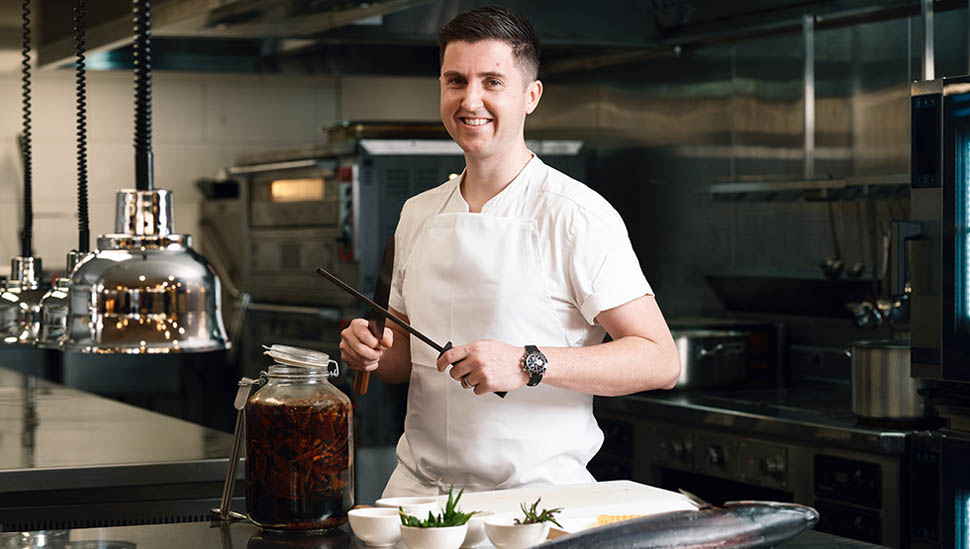
5) The new Saint Peter's is housed within a completely renovated hotel, for which Niland and his wife Julie curate the 30-seat bar and 40-seat restaurant on the ground floor. A space twice the size of the original, it features an open kitchen and a 6-cover chef's table. At lunch there's the bar's a la carte and oysters, in the evening the all-fish tasting menu (except desserts), accompanied by elaborate labels from coastal vineyards.
